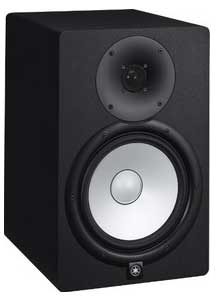Power conditioners sound fancy and expensive, but they’re really not. They cover several power related jobs, including voltage regulation, noise reduction, and surge protection. For a home studio with limited space, this is a great way to remove some problems from your tracks before you even start recording. Even if you don’t currently have a problem with noise from your power setup, prevention is often much easier than trying to edit out a noise.
You can read more about power conditioners here: http://www.prosoundweb.com/article/in_the_studio_whats_the_deal_with_power_conditioners/
Serious Electro Sound Library Released By Famous Audio
Famous Audio has released the Serious Electro sound library, including synths, bass, and plenty more to get your electro creativity flowing. For £24.95 GBP (close to $39 USD), this sound library is a great combination of quality and value. If you’re not sure that these samples suit your needs, listen to the demo samples to help make a decision.
You can read more and listen to the demo samples here: http://rekkerd.org/famous-audio-releases-serious-electro/
Monitor Speakers On A Budget
 If you are recording and mixing music in your home recording studio, then I highly, HIGHLY (getting the idea? :-)) recommend having a pair of monitor speakers.
If you are recording and mixing music in your home recording studio, then I highly, HIGHLY (getting the idea? :-)) recommend having a pair of monitor speakers.
Yes, when just getting started, you can sorta get by using headphones instead. And if you’re only recording voice-overs (no music), I’d go so far as to say you don’t really need monitor speakers. But for music, it’s absolutely critical if you expect to produce professional sounding mixes.
Why is that? Well you can get a good idea of why if you take something that sounded good in your headphones and listen to that in your car or over your entertainment center speakers, etc. Do you notice that it doesn’t sound anywhere near as good?
I know I was kinda horrified when I heard my music over real speakers after it sounded good in the headphones.
The reason for this is that most sound is experienced in the real word “through the air.” Speakers allow you to hear the sound more accurately because it is coming through the air and not being pumped straight into your ears through the cans (headphones). Yes, a bad room will also distort the sound some. So you have to take that into account (listening on lots of different types of speakers (the car works great for “telling it like it is”). But while mixing, you should rely MUCH more on speakers than headphones.
There is even a rule of thumb in music mixing – “NEVER use headphones.” I wouldn’t go THAT far. But I would prioritize getting a pair of monitor speakers VERY high on your budget for your home studio if you record music.
So the next question becomes – “what monitors should I get? Music Critic has done some of that work for you in their post “10 Best Studio Monitors & Speakers of 2018.” That would be an excellent starting point.
Music Radar also has a list of 5 of the most affordable speakers in their article below.
You can read about some of the more affordable models here: http://www.musicradar.com/news/tech/5-of-the-best-affordable-monitor-speakers-570959/1
Woman Fined $220,000 For Uploading 24 Songs
Copyright is a touchy subject. It’s important for artists to be able to legally protect their work, but it also isn’t clear how much peer-to-peer file sharing actually damages artist revenue. There have been anecdotal reports that increased file sharing between fans has lead to increased concert attendance, and many artists skip the peer-to-peer networks and release entire albums in a “pay what you want” format. For example, In Rainbows by Radiohead was released in this manner in 2007.
Whether you think the United States copyright laws are fine as-is, or that they need to be strengthened or culled, this article discusses some of the more recent updates with the 2007 case against Jammie Thomas, who is charged with copyright infringement by uploading 24 songs to a peer-to-peer network. You can read the article here: http://www.digitalmusicnews.com/permalink/2013/20130211government
Technical Details Of Impedance
Just knowing what to do when isn’t enough for some of us. We want to know why the rules of thumb exist, and what we can do to figure out the solution to new problems. In the case of high and low impedance devices, the details of why can get pretty technical. By understanding them, you can make better informed decisions about gear. For example, do you need an active distribution amplifier with your current setup, or is passively splitting the signal okay?
You can read the full article here: http://www.prosoundweb.com/article/understanding_high_and_low_impedance_signals/P3/